
漢德百科全書 | 汉德百科全书

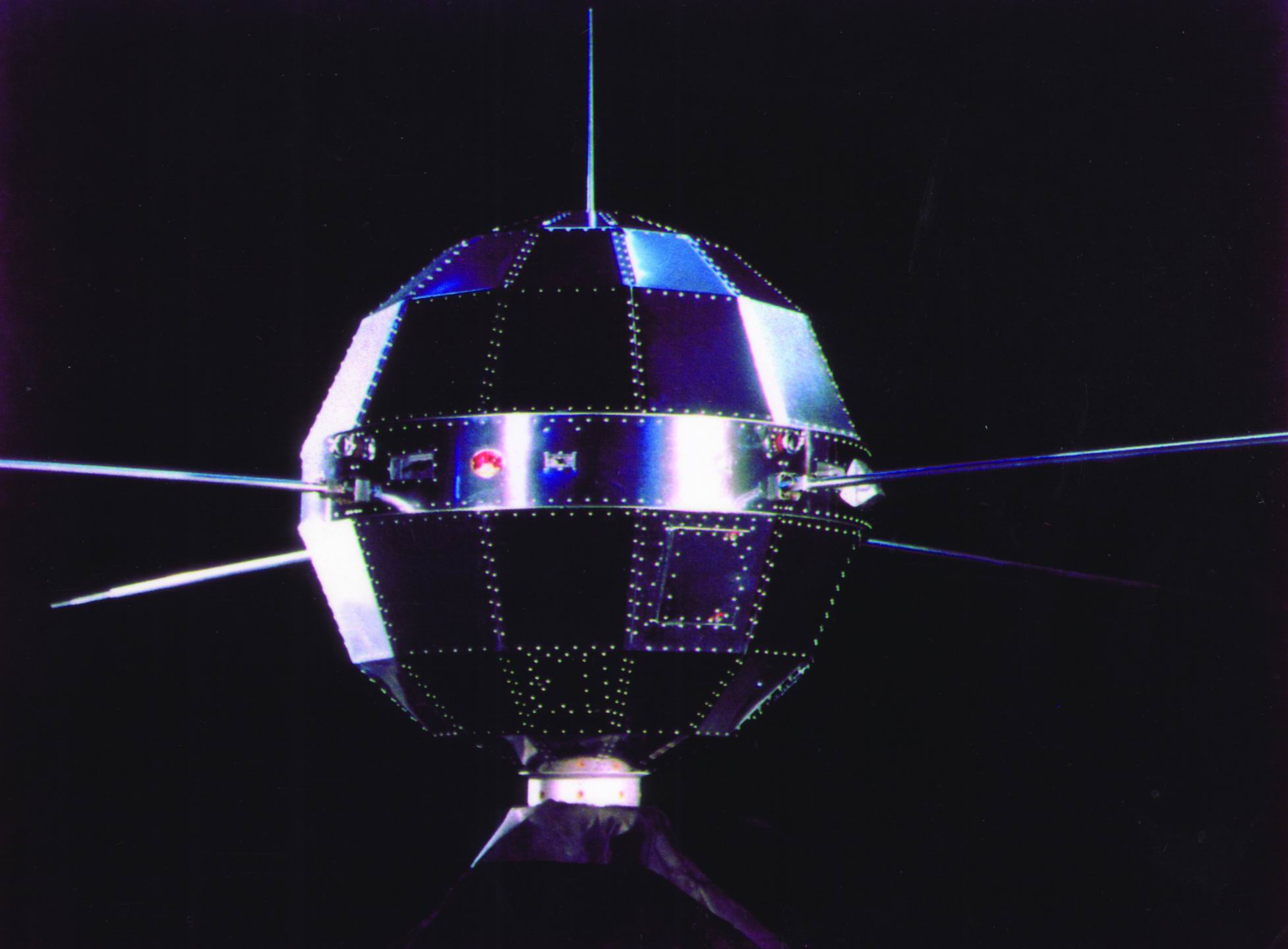
“东方红一号”(国际卫星标识符: 1970-034A)是中华人民共和国于1970年4月24日在酒泉卫星发射中心由长征一号运载火箭发射升空的一颗人造地球卫星[1][2],同时也是东方红人造卫星系列的首颗卫星[3][4]。该人造卫星与中国1964年的第一颗原子弹(596原子弹)、1966年的第一颗装载核弹头导弹、1967年的第一颗氢弹并称为“两弹一星”[5][6],是中国在1960-1970年代在国防科技领域的取得的一项重大成就[6][7]。
中国大陆于1958年提出研发人造卫星,同年酒泉发射中心亦开始筹建,1960年前获得了苏联方面一定的援助[1][8][9]。但由于技术困难等原因,卫星的研制于1965年才正式立项,此后还遭遇了文化大革命、中苏军事对峙及冲突等重大事件的冲击[1][10][11][12][13]。1970年东方红一号卫星最终研制成功,并在酒泉发射成功,标志着中华人民共和国成为世界上继苏联、美国、法国和日本之后第五个能够独立发射人造卫星的国家[14][15][16]。该卫星的重量大于前四个国家首颗卫星重量的总和[15][16],至今仍在轨道上运行[3][17]。
Dong Fang Hong I (chinesisch 東方紅一號 / 东方红一号, Pinyin Dōngfāng Hóng Yīhào), auch bekannt als „China 1“, war der erste chinesische Erdsatellit. Er wurde am 24. April 1970 um 13:35 Uhr UTC mit einer Trägerrakete des Typs Langer Marsch 1 gestartet[2] und war Teil des Dong-Fang-Hong-Satellitenprogramms, damals nach dem Beginn im Januar 1965 noch „Projekt 651“ genannt.

 Financial
Financial
 ***Global Financial Center
***Global Financial Center

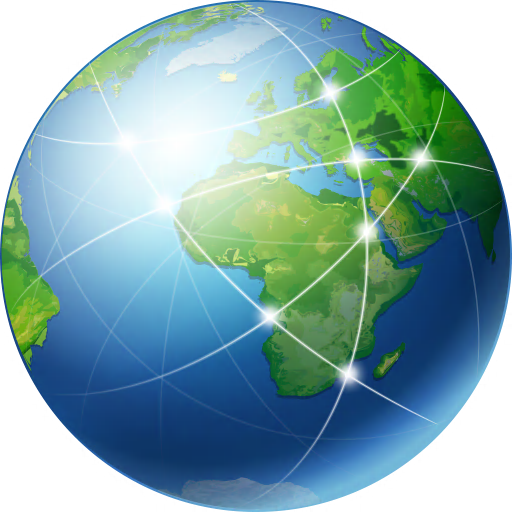 Geography
Geography

 Geography
Geography
 *World's Most Livable Cities
*World's Most Livable Cities

 History
History
 N 2000 - 2100 AD
N 2000 - 2100 AD

 History
History
 M 1500 - 2000 AD
M 1500 - 2000 AD

 International cities
International cities
 ***Global Urban Economic Competitiveness
***Global Urban Economic Competitiveness
 Japan
Japan
 Kantō
Kantō
 Olympic Summer Games
Olympic Summer Games
 1964 Summer Olympics
1964 Summer Olympics
 2020 Summer Olympics
2020 Summer Olympics

 Important port
Important port

Tokio (auch Tokyo, japanisch 東京 Tōkyō  [to̞ːkjo̞ː]) ist eine Weltstadt[3] in der Kantō-Region im Osten der japanischen Hauptinsel Honshū. Mit 9.508.776 Einwohnern ist sie nicht nur die bevölkerungsreichste Metropole des Landes, sondern als Sitz der japanischen Regierung und des Tennō auch die Hauptstadt Japans. Sie umfasst die 23 Bezirke auf dem Gebiet der 1943 als Verwaltungseinheit abgeschafften Stadt Tokio und ist damit keine eigene Gebietskörperschaft mehr; stattdessen bilden die Bezirke zusammen mit den Städten und Gemeinden der westlich gelegenen Tama-Region und den südlichen Izu- und Ogasawara-Inseln die Präfektur Tokio. Diese bildet wiederum das Zentrum der Metropolregion Tokio-Yokohama, in der mehr als 37 Millionen Menschen leben (Stand 2014), was die Region zum größten Ballungsraum der Welt macht.
[to̞ːkjo̞ː]) ist eine Weltstadt[3] in der Kantō-Region im Osten der japanischen Hauptinsel Honshū. Mit 9.508.776 Einwohnern ist sie nicht nur die bevölkerungsreichste Metropole des Landes, sondern als Sitz der japanischen Regierung und des Tennō auch die Hauptstadt Japans. Sie umfasst die 23 Bezirke auf dem Gebiet der 1943 als Verwaltungseinheit abgeschafften Stadt Tokio und ist damit keine eigene Gebietskörperschaft mehr; stattdessen bilden die Bezirke zusammen mit den Städten und Gemeinden der westlich gelegenen Tama-Region und den südlichen Izu- und Ogasawara-Inseln die Präfektur Tokio. Diese bildet wiederum das Zentrum der Metropolregion Tokio-Yokohama, in der mehr als 37 Millionen Menschen leben (Stand 2014), was die Region zum größten Ballungsraum der Welt macht.
Die Stadtgeschichte beginnt im Jahr 1446, als Ōta Dōkan in einem Sumpfgebiet am Nordufer der heutigen Bucht von Tokio mit dem Bau der Burg Edo begann, umgeben von einigen Fischerdörfern. 1590 ging diese Burg an Tokugawa Ieyasu, der hier nach seinem Sieg in der Schlacht von Sekigahara sein neues Shōgunat und damit die Edo-Zeit begründete. Edo wurde neben Kyōto zum politischen und kulturellen Zentrum des Landes. Mit der Meiji-Restauration 1868 wurde das Shōgunat abgeschafft und der Sitz des Tennō nach Edo verlegt, die Burg wurde zum Kaiserpalast und Edo bekam seinen neuen Namen Tokio, der „Östliche Hauptstadt“ bedeutet. Von da an wuchs auch die Bevölkerung der Stadt, die bereits um 1910 mit rund zwei Millionen Einwohnern zu den größten der Welt zählte. Im Zweiten Weltkrieg war Tokio zahlreichen Luftangriffen durch die USA ausgesetzt, bei denen rund die Hälfte der Stadtfläche zerstört wurde. Nach dem Ende der amerikanischen Besatzungszeit folgte ein rasanter wirtschaftlicher Aufschwung, einhergehend mit einem erneuten Bevölkerungszuwachs.
Tokio ist heute das Industrie-, Handels-, Bildungs- und Kulturzentrum Japans mit zahlreichen Universitäten, Hochschulen, Forschungsinstituten, Theatern und Museen. Mit den Flughäfen Narita und Haneda und als Ausgangspunkt der meisten Shinkansen-Linien ist es auch das Verkehrszentrum des Landes. Der Finanzplatz Tokio ist nicht nur der größte Japans, sondern zählt neben London, New York und Hongkong auch zu den fünf größten der Welt. Zudem weist die Stadt ein hohes Preisniveau auf und lag in einer Studie 2014 auf Platz 9 der teuersten Städte weltweit.[4][5] Neben modernen Sehenswürdigkeiten wie dem Tokyo Tower oder Tokyo Skytree bietet sie auch historische Anlagen wie die Kaiserlichen Gärten in Chiyoda, den Ueno-Park oder den Asakusa-Kannon-Tempel. In den vergangenen Jahren wurde Tokio zu einem zunehmend beliebten Tourismusziel und befindet sich mit jährlich bis zu acht Millionen Besuchern aus dem Ausland unter den 20 meistbesuchten Städten.[6] In einer Rangliste der Städte nach ihrer Lebensqualität belegte Tokio im Jahre 2018 den 50. Platz unter 231 untersuchten Städten weltweit.[7]
东京(日语:東京/とうきょう Tōkyō)是位于日本关东地方的都市,狭义上指东京都、或东京都区部(即东京市区),亦可泛指东京都及周边卫星都市群相连而成的“首都圈”(东京都会区)。目前(2017年8月)东京都区部人口数达946万,首都圈的人口数则达3千6百万,是目前全球规模最大的都会区[1],亦为亚洲最重要的世界级城市。东京是传统上的全球四大世界级城市[2]之一,在2016年GDP达9472.7亿美元,超越纽约(9006.8亿)成为全球第一,同时全球城市指数排名中排名第三。
东京古称江户,自德川幕府时代以来开始成为日本主要都市之一,明治维新时期改为现名后,更发展为日本政治、经济、文化、交通等众多领域的枢纽中心。经过二战后的继续发展,东京不仅成为世界商业金融、流行文化与时尚重镇,亦为世界经济发展度与富裕程度最高的都市之一。此外,东京还有目前全球最复杂、最密集的城市轨道交通系统,其中单就计算东京的地铁系统管辖区段每日平均运量达880万人次,繁忙程度居全球地铁第三位(如含地铁直通运转路线、私铁通勤路线及JR东日本通勤路线,则每日平均运量位居世界城市轨道交通运输系统第一位)。
在正式的行政区划定义上,东京仅限于东京都,与道、府、县同为日本的一级行政区,辖区包含东京都区部、多摩地方与伊豆群岛、小笠原群岛等离岛;其中,东京都区部为日本中央政府所在地。东京都同时也囊括了日本最南端(冲之鸟礁)和最东端(南鸟岛)等地理极点,拥有日本各都道府县中最多的人口数,同时也是日本人口密度最高的都道府县。
東京(とうきょう、英: Tokyo)は、日本の関東平野中央部に位置し、東京湾に面する都市。日本の首都である[1][注 1]。現在、その域内には23特別区・26市・5町・8村の基礎自治体がある[2]。
日本における政治・経済・文化の中心である。政治面では、日本政府が本拠地としている。立法府である国会の議事堂、司法府の頂点である最高裁判所、行政府の長である内閣総理大臣の官邸、中央省庁街(「霞が関」)などは、いずれも東京の中心部である東京23区にある。経済面では、日本の株式上場企業の本社のほとんどが東京に集中し、(東京圏では)購買力平価(PPP)を基にしても東京都市圏のGDPは1兆5369億ドル(2014年)であり[3]、世界的な経済都市であり、大消費地でもある。文化面では、たとえば現在では(東京都内に)千数百におよぶ劇場・ホール・ライブハウス類があり[4]多数のアーティストたちが活動する場であり、ポップカルチャーなどの新しい文化の発信地でもあり、ミシュランガイドの星つきの飲食店の数は世界最多で[5]食文化が華開いている場所でもある。
東京には、日本国内からだけでなく近隣の様々な国や世界各国から外国人が観光に訪れるようになった他、東京に移住した外国人が移民街を形成している。関東大震災や東京大空襲で焼け野原となったが、戦後の発展により現在は世界最大級のメトロポリス・世界都市となっている。東京は明治期にも課題が山積みの都市であったが(#明治維新後の課題と都市政策を参照)、現在もさまざまな課題を抱えている都市である(#近年の東京が都市としてかかえる課題を参照)。 東京都(とうきょうと、英: Tokyo Metropolis)は、日本の首都[注 1]。関東地方に位置する広域地方公共団体(都道府県)のひとつ。都庁所在地は新宿区[注 2]。最大の都市は世田谷区[注 3]。 管轄する領域は東京都区部(東京23区)、多摩地域(26市[注 4]と西多摩郡3町1村)および東京都島嶼部(大島、三宅、八丈、小笠原)の4支庁(2町7村)からなっている。東京都区部(東京23区)は、一つの都市として「東京」とも呼ばれる。沖ノ鳥島、南鳥島を含む小笠原諸島を含むため、日本最南端および最東端に位置する都道府県でもある。都公認の「東京都」の英語表記はTokyo Metropolis(Tokyo Met.)。他には Tokyo Prefecture と Tokyo Metropolitan Prefecture がある。
Tokyo (東京 Tōkyō, /ˈtoʊkioʊ/;[7] Japanese: [toːkʲoː] ( listen)), officially Tokyo Metropolis (東京都 Tōkyō-to), is one of the 47 prefectures of Japan and has been the capital since 1869.[8][9] The Greater Tokyo Area is the most populous metropolitan area in the world.[10] It is the seat of the Emperor of Japan, the Japanese government and the National Diet. Tokyo is in the Kantō region on the southeastern side of the main island Honshu and includes the Izu Islands and Ogasawara Islands.[11] Tokyo was formerly named Edo when Shōgun Tokugawa Ieyasu made the city as his headquarters in 1603. It became the capital after Emperor Meiji moved his seat to the city from Kyoto in 1868; at that time Edo was renamed Tokyo. Tokyo Metropolis was formed in 1943 from the merger of the former Tokyo Prefecture (東京府 Tōkyō-fu) and the city of Tokyo (東京市 Tōkyō-shi).
listen)), officially Tokyo Metropolis (東京都 Tōkyō-to), is one of the 47 prefectures of Japan and has been the capital since 1869.[8][9] The Greater Tokyo Area is the most populous metropolitan area in the world.[10] It is the seat of the Emperor of Japan, the Japanese government and the National Diet. Tokyo is in the Kantō region on the southeastern side of the main island Honshu and includes the Izu Islands and Ogasawara Islands.[11] Tokyo was formerly named Edo when Shōgun Tokugawa Ieyasu made the city as his headquarters in 1603. It became the capital after Emperor Meiji moved his seat to the city from Kyoto in 1868; at that time Edo was renamed Tokyo. Tokyo Metropolis was formed in 1943 from the merger of the former Tokyo Prefecture (東京府 Tōkyō-fu) and the city of Tokyo (東京市 Tōkyō-shi).
Tokyo has 39 million residents, 50% more people than any other urban area, with a $2.5 trillion economy larger than that of any other city; if it were a country, Tokyo would be the 8th largest economy in the world. Tokyo is often referred to as a city, but is officially known and governed as a "metropolitan prefecture", which differs from and combines elements of a city and a prefecture, a characteristic unique to Tokyo. The Tokyo Metropolitan Government administers the 23 Special Wards of Tokyo (each governed as an individual city), which cover the area that was the city of Tokyo before it merged and became the metropolitan prefecture in 1943, the 30 municipalities in the western part of the prefecture, and the two outlying island chains. The population of the special wards is over 9 million people, with the total population of the prefecture exceeding 13 million. The prefecture is part of the world's most populous metropolitan area with upwards of 37.8 million people and the world's largest urban agglomeration economy. In 2011, the city hosted 51 of the Fortune Global 500 companies, the highest number of any city in the world at that time.[12] Tokyo ranked third (twice) in the International Financial Centres Development Index. The city is also home to various television networks such as Fuji TV, Tokyo MX, TV Tokyo, TV Asahi, Nippon Television, NHK and the Tokyo Broadcasting System.
Tokyo is ranked first in the Global Economic Power Index and third in the Global Cities Index. The city is considered an alpha+ world city – as listed by the GaWC's 2008 inventory[13] – and in 2014, Tokyo was ranked first in the "Best overall experience" category of TripAdvisor's World City Survey (the city also ranked first in the following categories: "helpfulness of locals", "nightlife", "shopping", "local public transportation" and "cleanliness of streets").[14] In 2015, Tokyo was ranked as the 11th most expensive city for expatriates, according to the Mercer consulting firm,[15] and also the world's 11th most expensive city, according to the Economist Intelligence Unit's cost-of-living survey.[16] In 2015, Tokyo was named the Most Liveable City in the world by the magazine Monocle.[17] The Michelin Guide has awarded Tokyo by far the most Michelin stars of any city in the world.[18][19] Tokyo was ranked first out of all sixty cities in the 2017 Safe Cities Index.[20] The QS Best Student Cities ranked Tokyo as the 3rd-best city in the world to be a university student in 2016[21] and 2nd in 2018.[22] Tokyo hosted the 1964 Summer Olympics, the 1979 G-7 summit, the 1986 G-7 summit, and the 1993 G-7 summit, and will host the 2019 Rugby World Cup, the 2020 Summer Olympics and the 2020 Summer Paralympics.
Tokyo (東京(とうきょう), Tōkyō?, littéralement « Capitale de l'est »), anciennement Edo (江戸(えど)?), officiellement la préfecture métropolitaine de Tokyo (東京都(とうきょうと), Tōkyō-to?), est la capitale actuelle du Japon. Elle est la plus peuplée des préfectures du Japon, avec plus de 13 831 421 habitants intra-muros en 2018 et 42 794 714 dans l'agglomération2, et forme l'aire urbaine la plus peuplée au monde. Située sur la côte est de l'île principale de l'archipel japonais, Honshū, Tokyo est l'une des quarante-sept préfectures du Japon. Principal centre politique de l'archipel depuis le XVIIe siècle, la ville accueille la plupart des institutions du pays : la résidence de l'empereur du Japon, du Premier ministre, le siège de la Diète (le parlement japonais), du Cabinet, les ministères qui le constituent ainsi que toutes les ambassades étrangères.
À l'origine, Tokyo était un petit village de pêcheurs nommé Edo (« l'estuaire »). Fortifié au XVe siècle, Edo devient la base militaire du shogun Tokugawa Ieyasu à la fin du XVIe siècle, puis la capitale de son gouvernement. Durant l’époque d'Edo (1603-1868), la ville se développe et devient l'une des plus peuplées au monde à la fin du XVIIIe siècle, avec une population de près d'un million d'habitants. Avec la restauration de l'Empire en 1868, elle est confortée dans son rôle de cœur politique du Japon : le château d'Edo devient la résidence de l'empereur Meiji (Kōkyo), et la ville acquiert son nom actuel par opposition à Kyoto, l'ancienne capitale. Elle est ravagée en 1923 par un séisme de magnitude 7,9 qui fait plus de 100 000 morts. Durant la Seconde Guerre mondiale, elle est détruite pour moitié par des bombardements aériens américains, mais est rapidement reconstruite. Dans la seconde moitié du XXe siècle, Tokyo devient une métropole de rang mondial grâce à un fort développement industriel — notamment dans l'électronique —, et voit sa population multipliée par dix en cinquante ans.
Principal centre économique et financier du Japon, Tokyo est l'une des principales places financières asiatiques et mondiales. Elle est la première ville mondiale en termes de produits urbains bruts. Le dynamique arrondissement de Shinjuku comporte de nombreux gratte-ciels, dont la mairie de la ville, et plusieurs grands magasins du Japon. Minato-ku accueille les sièges sociaux de nombreuses entreprises japonaises et étrangères, ainsi qu'une cinquantaine d'ambassades. Chiyoda concentre quant à lui les institutions politiques japonaises. Enfin, Shibuya est réputé être l'un des quartiers les plus animés de la ville, grâce à la présence de grands centres commerciaux comme le 109. Malgré la modernité de son architecture, dont témoigne la tour Tokyo Skytree, de nombreux sanctuaires shinto et temples bouddhistes ont été préservés ou reconstruits après les bombardements, comme le Sensō-ji, le sanctuaire Yasukuni, le Zōjō-ji ou les portes Hōzōmon.
Située au fond de la baie de Tokyo, la commune de Tokyo dispose d'un statut administratif particulier parmi les préfectures du Japon, la ville de Tokyo ayant été supprimée en tant qu'entité politique ou administrative en 1943. L'agglomération de Tokyo, qui s'étend bien au-delà des limites de la préfecture, s'étend sur une large frange de la baie de Tokyo ainsi que sur la région du Kantō. Elle constitue en outre un des pôles de la mégalopole japonaise, avec notamment Ōsaka et Nagoya. La préfecture a organisé les Jeux olympiques d'été de 1964, et les accueillera à nouveau en 2020.
Tokio (東京都 Tōkyō-to?, lit. ‘capital del este’; pronunciación japonesa:  [toːkʲoː] (?·i)) es la capital de facto6 de Japón, localizada en el centro-este de la isla de Honshu, concretamente en la región de Kanto. En conjunto forma una de las 47 prefecturas de Japón, aunque su denominación oficial es metrópolis o capital (都 -to). La ciudad es el centro de la política, economía, educación, comunicación y cultura popular del país. Cuenta también con la mayor concentración de sedes corporativas, instituciones financieras, universidades y colegios, museos, teatros, y establecimientos comerciales y de entretenimiento de todo Japón.
[toːkʲoː] (?·i)) es la capital de facto6 de Japón, localizada en el centro-este de la isla de Honshu, concretamente en la región de Kanto. En conjunto forma una de las 47 prefecturas de Japón, aunque su denominación oficial es metrópolis o capital (都 -to). La ciudad es el centro de la política, economía, educación, comunicación y cultura popular del país. Cuenta también con la mayor concentración de sedes corporativas, instituciones financieras, universidades y colegios, museos, teatros, y establecimientos comerciales y de entretenimiento de todo Japón.
Con una población que supera los 13 millones de habitantes, se subdivide en 23 barrios (区 -ku); 26 ciudades (市 -shi); un distrito (郡 -gun) subdividido en tres pueblos (町 -chō o -machi) y una villa (村 -son o -mura); y cuatro subprefecturas (支庁 -shichō) subdivididas en dos pueblos y siete villas, que representan a varias pequeñas islas al sur de Honshu que se extienden más allá de 1800 km de Shinjuku, capital de la metrópoli y sede de la gobernación. El centro de Tokio, con sus 23 barrios, ocupa un tercio de la metrópoli, con una población cercana a los 13,23 millones de habitantes; esta área es lo que se conoce internacionalmente como la ciudad de Tokio. En su área metropolitana viven más de 37 millones de habitantes, lo que la convierte en la mayor aglomeración urbana del mundo.
A pesar de que Tokyo es la romanización más común del nombre en japonés, el nombre de la ciudad es Tokio en español y otros idiomas —entre ellos el alemán y el neerlandés—. En inglés y otros idiomas se escribe Tokyo, aunque antiguamente también se escribía Tokio. En el pasado, la ciudad se denominaba como Tokei, Edo o Yedo. El gentilicio de Tokio es tokiota.
Tokio fue sede de los Juegos Olímpicos de 1964 y será sede de los Juegos Olímpicos de 2020.7
То́кио (яп. 東京 То:кё: (инф.), «Восточная столица»[4][5]) — столица Японии, её административный, финансовый, промышленный и политический центр. Крупнейшая городская экономика мира[6]. Расположен в юго-восточной части острова Хонсю, на равнине Канто в бухте Токийского залива Тихого океана.
Помимо столицы, Токио также является одной из сорока семи префектур страны. Площадь префектуры составляет 2188,67 км²[7], население — 13 742 906 человек (1 октября 2017)[8], плотность населения — 6279,11 чел./км². По состоянию на 1 мая 2020 года население Токио составляло 14 002 973 человека, что делает Токио префектурой с самым большим населением в Японии.[9] Большой Токио является городской территорией с самым большим населением в мире, с населением по состоянию на 2016 год в 38 140 000 человек.[2]
Токийский столичный округ — административная единица Японии, включающая в себя специальные районы Токио, область Тама и островные территории Токийского столичного округа (острова Идзу и Огасавара).
 Breakthrough Prize
Breakthrough Prize
 Fundamental Physics Breakthrough Prize
Fundamental Physics Breakthrough Prize
 Breakthrough Prize
Breakthrough Prize
 New Horizons in Physics Prize
New Horizons in Physics Prize
 Japan
Japan
 Kantō
Kantō

 Medical, Pharmaceutical, Rehabilitation
Medical, Pharmaceutical, Rehabilitation
 Medical colleges/Research Institute
Medical colleges/Research Institute
 Nobel prize
Nobel prize
 Nobel Prize in Chemistry
Nobel Prize in Chemistry
 Nobel prize
Nobel prize
 Nobel Peace Prize
Nobel Peace Prize
 Nobel prize
Nobel prize
 Nobel Prize in Literature
Nobel Prize in Literature
 Nobel prize
Nobel prize
 Nobel Prize in Physics
Nobel Prize in Physics
 Nobel prize
Nobel prize
 University/Institute
University/Institute
 Sinology
Sinology
 Top Global University Project
Top Global University Project
 National universities
National universities
 Top Global University Project
Top Global University Project
 Top Type
Top Type
 Universities in Japan
Universities in Japan

 Science and technology
Science and technology
 *World famous research institutions
*World famous research institutions

 England
England

 History
History
 M 1500 - 2000 AD
M 1500 - 2000 AD
 History of the United Kingdom
History of the United Kingdom
 Ireland
Ireland
 Northern Ireland
Northern Ireland

 Royalty
Royalty
 United Kingdom
United Kingdom
 Wales
Wales
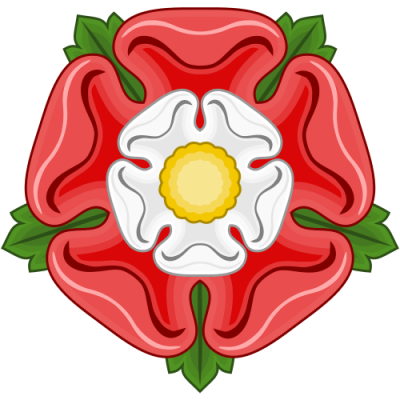
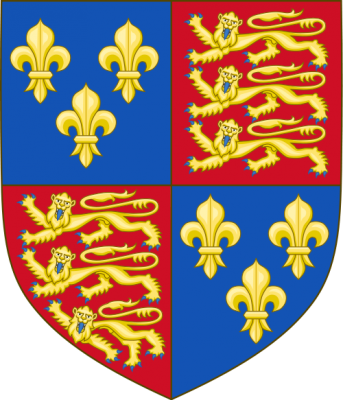
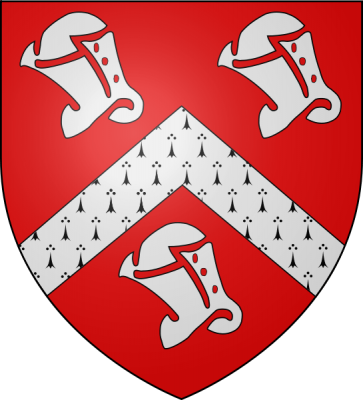
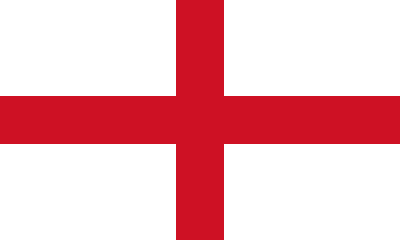
Haus Tudor [ˈtuːdə], [ˈtʲuːdə], walisisch Tudur oder Tewdwr (engl. Royal House of Tudor), ist der Name eines walisischen Geschlechtes auf dem englischen Königsthron von 1485 bis 1603.
Der erste englische Tudor-König Heinrich VII. führte seinen Anspruch auf den Thron über seine Mutter Margaret Beaufort auf den 1377 gestorbenen König Eduard III. Plantagenet zurück. Vater Heinrichs war Edmund Tudor, Earl of Richmond, Sohn des Owen Tudor. Als Oberhaupt der Partei des Hauses Lancaster besiegte er den letzten König aus dem Hause York, Richard III. in der Schlacht von Bosworth Field 1485, wurde vom Parlament anerkannt und heiratete Elizabeth of York, Schwester des verschollenen Königs Eduard V.
Nach der letzten englischen Königin aus dem Hause Tudor folgte Jakob I. aus dem Haus Stuart auf den Thron, da er der Urenkel von Margaret Tudor war; er wurde der erste gemeinsame König von England und Schottland
都铎王朝(英语:House of Tudor),是1485至1603年间统治英格兰王国和其属土的王朝。而该王朝首位君主亨利·都铎乃威尔士古时的德赫巴思公国(Welsh principality of Deheubarth)统治者和英格兰的兰开斯特王室的后裔。
来自德赫巴斯国(Deheubarth)的亨利·都铎不但得到兰开斯特王朝的支持者的民心,更在战争中获得兰开斯特宿敌——约克王室的支持,在玫瑰战争后期渐渐得势。之后顺利登上英王大位,是为亨利七世。而他和伊丽莎白·约克的联姻,象征着过往开战的双方,在新王朝的旗帜下联合起来,进一步巩固了都铎家族的胜利。而都铎王朝的权势并不局限在英格兰,他们在《1535-1542年威尔士系列法案》中成功将威尔士兼并入英格兰,并确立了英格兰对爱尔兰王国的治权。他们亦维持了对法国王位的主张,但历任君主都没有在实现该主张上有任何实质进展。
历史上总共有五位都铎君主统治过英格兰的属地,超过一个世纪。而亨利八世是唯一一位活至成年的亨利七世后裔。因此王位继承一直是都铎年间的主要政治议题。
随着终身不嫁的“童贞女王”伊丽莎白一世的驾崩,都铎王室从此绝嗣。而当时在位苏格兰国王詹姆士六世的曾祖母,正是亨利八世的长姊玛格丽特·都铎公主。因此詹姆士根据和伊丽莎白生前的秘密约定,入继英格兰王位,英苏两国组成共主邦联,结束两国持续近六百年的战争,进入了斯图亚特王朝时期。
テューダー朝(テューダーちょう、英語:Tudor dynasty)は、イングランド王国(1485年 - 1603年)およびアイルランド王国(1541年 - 1603年)の王朝。チューダー朝とも。薔薇戦争を勝ち抜き、ヨーク朝を倒して王位を得た。女系を通じてランカスター朝に繋がる。
テューダー家はウェールズを発祥とする、かつてのウェールズの君主の末裔の家系であったが、ヘンリー7世の祖父オウエン・テューダーはイングランド王ヘンリー5世の未亡人キャサリン・オブ・ヴァロワの納戸係秘書を務める下級貴族に過ぎなかった。しかしオウエンはキャサリンと結婚し、その間に生まれたエドマンド・テューダーらの子供たちは一躍、ヘンリー6世の異父弟として、またフランス王家の血を引く者として上級貴族の一員となった。エドマンドが、エドワード3世の四男ジョン・オブ・ゴーントの曾孫であるボーフォート家のマーガレット・ボーフォートと結婚し、その間に生まれたリッチモンド伯ヘンリー・テューダーは母方の血統により最後のランカスター家の王位継承権者となった。1485年、ヘンリー・テューダーはボズワースの戦いでリチャード3世を破ってヘンリー7世として即位し、テューダー朝を開いた。
百年戦争、薔薇戦争で疲弊した諸侯を抑圧して絶対王政を推進し、海外進出にも積極的で、その政策はヘンリー8世、エドワード6世、メアリー1世、エリザベス1世に受け継がれ、テューダー朝の全盛期を築いた。エリザベス1世の死によりヘンリー8世の血筋が絶えたため、ヘンリー7世の血を引くスコットランド王ジェームズ6世がジェームズ1世としてイングランド王に迎えられ、イングランドにおけるステュアート朝を開いた。王家の出自もあって、この時代に国王の臣下として活躍した人物には、フランシス・ドレークやウォルター・ローリーなどウェールズ系が多いと言われている。
The House of Tudor was an English royal house of Welsh origin,[1] descended in the male line from the Tudors of Penmynydd. Tudor monarchs ruled the Kingdom of England and its realms, including their ancestral Wales and the Lordship of Ireland (later the Kingdom of Ireland) from 1485 until 1603, with five monarchs in that period. The Tudors succeeded the House of Plantagenet as rulers of the Kingdom of England, and were succeeded by the House of Stuart. The first Tudor monarch, Henry VII of England, descended through his mother from a legitimised branch of the English royal House of Lancaster. The Tudor family rose to power in the wake of the Wars of the Roses, which left the House of Lancaster, to which the Tudors were aligned, extinct.
Henry Tudor was able to establish himself as a candidate not only for traditional Lancastrian supporters, but also for the discontented supporters of their rival House of York, and he rose to the throne by the right of conquest. His victory at the Battle of Bosworth Field was reinforced by his marriage to the English princess Elizabeth of York, daughter of Edward IV, symbolically uniting the former warring factions under a new dynasty. The Tudors extended their power beyond modern England, achieving the full union of England and the Principality of Wales in 1542 (Laws in Wales Acts 1535 and 1542), and successfully asserting English authority over the Kingdom of Ireland. They also maintained the nominal English claim to the Kingdom of France; although none of them made substance of it, Henry VIII fought wars with France trying to reclaim that title. After him, his daughter Mary I lost control of all territory in France permanently with the fall of Calais in 1558.
In total, five Tudor monarchs ruled their domains for just over a century. Henry VIII was the only son of Henry VII to live to the age of maturity. Issues around the royal succession (including marriage and the succession rights of women) became major political themes during the Tudor era. In 1603 when Elizabeth I died without heir, the Scottish House of Stuart supplanted the Tudors as England's royal family through the Union of the Crowns. The first Stuart to be King of England, James VI and I, descended from Henry VII's daughter Margaret Tudor, who in 1503 married James IV as part of the Treaty of Perpetual Peace.For analysis of politics, diplomacy and social history, see Tudor period.
La famille Tudor est à l'origine d'une dynastie royale qui a donné son nom à la période de l'histoire anglaise située entre 1485 et 1603. L'ère Tudor marque la fin de la guerre civile qu'a constituée la guerre des Deux-Roses et couvre le règne de cinq monarques qui ont contribué à faire de l'Angleterre une puissance européenne majeure.
La dynastie Tudor ou maison Tudor (Tudur en gallois) est d'origine galloise et voit son origine remonter au XIIIe siècle. Les deux principaux monarques Henri VIII d'Angleterre et la reine Élisabeth Ire, orchestrèrent la mutation du royaume d'Angleterre d'une arrière-cour européenne toujours plongée dans le Moyen Âge en un puissant État de la Renaissance1.
La dinastia Tudor (in inglese: House of Tudor; in gallese: Tudur) fu un'antica casata reale inglese di origini gallesi. I Tudor, tramite cinque sovrani, governarono il Regno d'Inghilterra e i suoi reami, compreso il loro ancestrale Galles e la Signoria d'Irlanda (più tardi il Regno d'Irlanda), dal 1485 al 1603.
I Tudor succedettero ai Plantageneti come governanti del Regno d'Inghilterra. Il primo monarca Tudor fu Enrico VII, discendente attraverso sua madre da un ramo legittimato della Casa reale inglese di Lancaster. Enrico salì al potere dopo la Guerra delle due rose (1455–1485) , atroce scontro fratricida che lasciò gli York decimati e i Lancaster estinti: infatti, l'ultimo re della famiglia Lancaster, Enrico VI, e il suo unico erede Edoardo morirono entrambi nel 1471, mentre l'ultimo re della famiglia York, Riccardo III, venne sconfitto e ucciso nella battaglia di Bosworth Field contro Enrico Tudor, il quale si affermò come discendente e membro dei Lancaster e conquistò ben presto la Corona d'Inghilterra.
Enrico VII inoltre, per rafforzare la propria posizione, sposò Elisabetta di York, figlia del re Edoardo IV e nipote di Riccardo III, in modo da racchiudere entrambe le famiglie sotto, letteralmente, un unico "tetto". Di questa unione è simbolo la cosiddetta "rosa Tudor", generata dall'unione della rosa rossa dei Lancaster e della rosa bianca degli York.
Insieme al già citato Enrico VII, suo figlio Enrico VIII e sua nipote Elisabetta I furono i tre principali sovrani ed esponenti della dinastia ed ebbero un ruolo molto importante nella trasformazione dell'Inghilterra da Paese della "periferia" europea dell'epoca medievale a potenza destinata a dominare gran parte del Pianeta nei secoli successivi.
I Tudor, infatti, estesero il loro dominio oltre la mera Inghilterra, governando anche sul Galles e sull'Irlanda. Nominalmente mantennero vive le storiche pretese della monarchia inglese sul trono di Francia, ma nessuno eccetto Enrico VIII vi si impegnò seriamente. Alla fine fu sua figlia Maria I ad abbandonare ogni pretesa su di esso quando perse l'ultimo avamposto inglese in Francia, Calais.
Dopo la morte senza eredi maschi del quindicenne Edoardo VI e il successivo regno delle sue due sorelle, Maria I e Elisabetta I, anch'esse morte senza eredi, la dinastia dei Tudor si estinse definitivamente nel 1603, portando sul trono inglese la Casa reale degli Stuart, già sovrani di Scozia.
La Casa de Tudor o Dinastía Tudor gobernó el reino de Inglaterra desde 1485 hasta 1603.2 Su emblema era una rosa, la rosa Tudor, de diez pétalos, cinco blancos en el centro y cinco rojos en el borde exterior. De esta forma se simbolizaba la unión de la Casa de York con la Casa de Lancaster y el fin de la guerra civil que ensangrentó la historia inglesa durante el siglo XV. Su historia está entrelazada con los acontecimientos más importantes y dramáticos de la historia moderna de Europa y del mundo, pues bajo su gobierno comenzó la exploración inglesa de América. Por ello se la considera como la familia real inglesa más famosa y controvertida. Son un ejemplo de las monarquías autoritarias con las que compitieron y se relacionaron en el escenario de la Europa occidental del Antiguo Régimen.3
Тюдо́ры (по традиционному русскому ударению; английское ударение на первый слог, англ. Tudors, ед. ч. Tudor) — королевская династия Англии в 1485—1603.
Происходит от валлийской дворянской семьи ap Tuddur, названной в честь Тудура ап Горонви (валл. Tudur ap Goronwy, 1310-1367), род которого издавна владел землями на острове Англси.
Является одной из ветвей рода Койлхена, и, таким образом, имела формальное право на владение всей Британией. Роль в английской истории Тюдоры начали играть с сына Маредида Оуэна Тюдора, который женился на Екатерине Французской, вдове Генриха V. От этого брака родились два сына — Эдмунд и Джаспер, — которым их единоутробный брат Генрих VI дал титулы графа Ричмонда и графа Пембрука соответственно. Эдмунд Тюдор ещё раз породнился с домом Ланкастеров, женившись на правнучке основателя этой ветви Джона Гонта (через узаконенную линию потомков его любовницы, а позднее и жены, Катерины Суинфорд), официально не имевшей права на престол Маргарите Бофорт. От этого брака (уже после смерти отца) родился будущий Генрих VII (1457).
После гибели последнего Ланкастера, принца Эдуарда (1471), ланкастерская партия поддерживала кандидатуру находившегося во Франции Генриха Тюдора[1], хотя были и другие претенденты, также находившиеся в родстве с Бофортами (например, герцог Бекингэм). Воспользовавшись кризисом в Англии после захвата власти Ричардом III, Генрих высадился в Уэльсе, двинулся вглубь страны, победил Ричарда, павшего в битве при Босворте, и стал 22 августа 1485 г. королём. Права на престол Генрих подкрепил женитьбой на дочери Эдуарда IV Йоркского, Елизавете; таким образом, дома Ланкастеров и Йорков объединились.
После Генриха VII царствовал его сын Генрих VIII, а затем трое детей последнего: Эдуард VI, Мария I и Елизавета I. Между царствованиями Эдуарда и Марии престол был на несколько дней узурпирован правнучкой Генриха VII леди Джейн Грей.
Так как дети Генриха VIII не оставили потомства, со смертью Елизаветы I династия Тюдоров пресеклась. Самым близким родственником династии стал король Шотландии Яков VI, сын Марии Стюарт, которая была дочерью Якова V, матерью которого была сестра Генриха VIII Маргарита Тюдор. Таким образом, после Елизаветы престол перешёл к Якову (ставшему королём Англии как Яков I), и династия Стюартов стала царствовать в обоих королевствах Британских островов.
Время Тюдоров — период Возрождения в Англии, становления абсолютизма, активного участия страны в европейской политике, расцвета культуры (материальной и духовной), экономических реформ (огораживания), приведших к обнищанию (пауперизации) значительной части населения. Одно из самых драматических событий периода — Английская реформация, предпринятая Генрихом VIII по личным причинам (отсутствие санкции Рима на новый брак), Контрреформация и репрессии против протестантов при Марии, новый возврат к англиканству при Елизавете.
При Тюдорах Англия достигла Америки (экспедиция Кабота — конец XV века) и начала её колонизацию. Важное политическое событие, упрочившее единство нации — морская победа над испанской «Непобедимой армадой» в 1588 году.
 Eurovision Song Contest,ESC
Eurovision Song Contest,ESC
 UEFA European Championship 2020
UEFA European Championship 2020

 History
History
 N 2000 - 2100 AD
N 2000 - 2100 AD

 History
History
 M 1500 - 2000 AD
M 1500 - 2000 AD

 International cities
International cities
 ***Global Urban Economic Competitiveness
***Global Urban Economic Competitiveness

 International cities
International cities
 *European Capital of Culture
*European Capital of Culture
 Ireland
Ireland

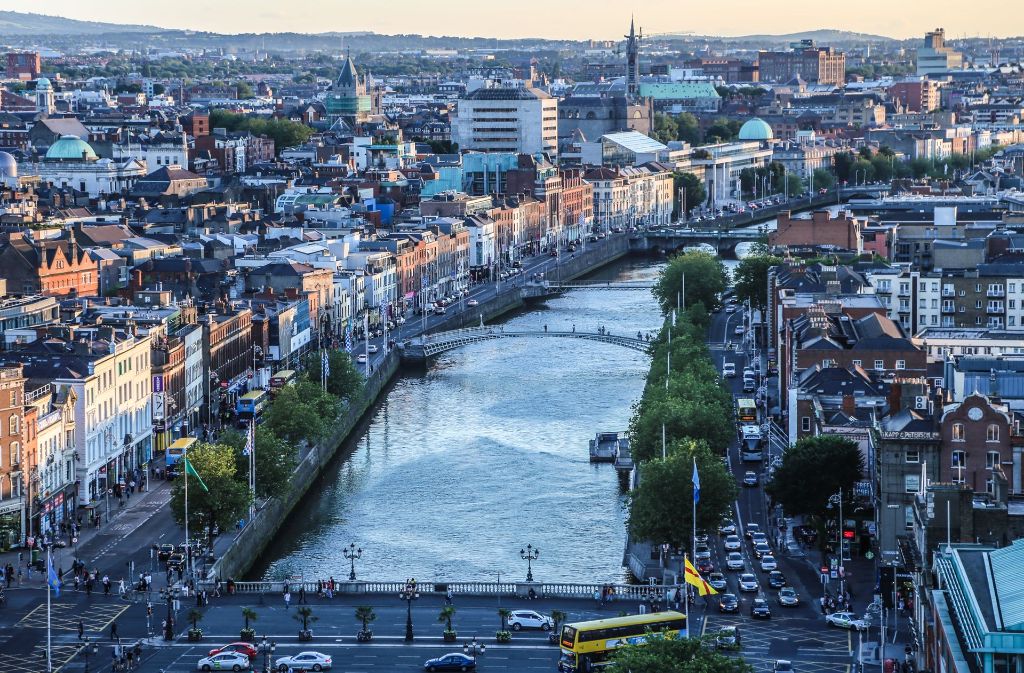
Dublin ([ˈdʌblɪn], lokal auch [dʊbᵊlən]) ist die Hauptstadt und größte Stadt der Republik Irland. Der irische Name ist Baile Átha Cliath ([ˈbalʲɑːˈkʲlʲiə] oder [ˈbʲlʲɑːˈkʲlʲiə]). Die deutsche Übersetzung lautet „Stadt an der Hürdenfurt“. Der englische Name stammt vom irischen Duibhlinn ([ˈdivʲ.lʲiːnʲ]), „Schwarzer Teich“.[1]
Dublin liegt an der Ostküste der Insel Irland, an der Mündung des Flusses Liffey in die Dublin Bay. Dublin liegt durchschnittlich 20 Meter über dem Meeresspiegel.
Die Liffey teilt Dublin in den Nordteil (Northside) und den eher vornehmen Süden (Southside), wobei diese Unterteilung heute weniger scharf ist als in früheren Jahrzehnten. Die Innenstadt erhält ihre Struktur durch das Kreuz aus dem Fluss Liffey mit seinen zahlreichen Brücken und der Hauptachse O’Connell Street–Grafton Street–Harcourt Street. Hier liegen die meisten Kaufhäuser, aber auch das Trinity College mit seiner berühmten Bibliothek und der städtische Park St. Stephen’s Green. Die Straßenzüge im typischen Georgianischen Stil findet man vor allem im Gebiet um den Merrion Square, in der Nähe der Nationalgalerie und beim Sitz der Landesregierung (Leinster House), um St. Stephen’s Green, aber auch auf der Nordseite am Mountjoy Square. Umschlossen wird dieses Gebiet von der North Circular Road und der South Circular Road. Außerhalb der Innenstadt liegen die Wohnquartiere, von denen manche noch einen sehr einheitlichen Stil aufweisen; das klassische Arbeiterviertel Cabra besteht aus langen Reihen winziger Häuser aus Backsteinen, Marino ist ein Beispiel für eine am Reißbrett konzipierte Mittelschicht-Siedlung, in Beaumont überwiegen die semi-detached, die Doppelhaushälften.
Die Geschichte Dublins ist eng mit der Geschichte Irlands im Allgemeinen verknüpft.
Die erste bekannte Erwähnung findet Dublin in den Schriften des Ptolemäus aus dem Jahr 140 unter dem Namen Eblana. Ursprünglich bestand die Stadt aus einer keltischen Siedlung mit dem Namen „Áth Cliath“, was so viel wie „Hürden-Furt“ bedeutet. 842 gründeten Wikinger daneben ein eigenes Dorf, das sie „Duibhlinn“, in etwa „schwarzer Teich“, nannten nach einem von ihnen als Hafenbecken genutzten Gewässer. Die Machtstellung des von ihnen gegründeten Königreich Dublin ging nach der Schlacht von Clontarf 1014 verloren.
Die Stadt wurde 1170 von den Anglonormannen unter der Führung von Richard de Clare und seinem irischen Verbündeten Diarmuid Mac Murchadha Caomhánach eingenommen. Ab 1172 wurde Dublin das Verwaltungszentrum der Anglonormannen. Die Stadt hatte zu der Zeit weitverzweigte internationale Handelsbeziehungen zu Skandinavien, Island, Großbritannien und in zunehmendem Maße zu Frankreich.[2]
Der Bereich der gerichtlichen Zuständigkeit der Stadt wurde 1192 in einer Urkunde niedergelegt. Insgesamt wurde ein sechs Quadratmeilen großes Gebiet durch Erlass des Königs Heinrich II. übereignet. Die Stadt blieb im Prinzip innerhalb dieser Abgrenzungen selbstverwaltet.[3]
Im Jahre 1204 befahl König Johann von England die Errichtung einer Festung in Dublin (Dublin Castle), um seine Machtposition im Land zu stärken.[4] In den folgenden Jahrhunderten entwickelte sich diese Burg zum britischen Verwaltungszentrum in Irland. Der britische Vizekönig wohnte bis 1782 in diesem Schloss.
1229 wurde den freien Bürgern und Ehrenbürgern der Stadt das Recht zuerkannt, jedes Jahr einen Bürgermeister zu wählen. Der Stadtrat setzte sich aus 24 prominenten Bürgern, meist Kaufleuten, zusammen.
Die Pest kam 1348 nach Dublin und verursachte eine beachtliche Schrumpfung der (jetzt überwiegenden englischen) Bevölkerung.
Zwischen 1541 und 1800 war Dublin Hauptstadt des Königreiches Irland.
都柏林(英语:Dublin;爱尔兰语:Baile Átha Cliath)是爱尔兰共和国的首都以及最大的城市,[3][4]靠近爱尔兰岛东岸的中心点,位处都柏林郡的利菲河(River Liffey)河口、都柏林地区的中心。都柏林自中世纪以来一直是爱尔兰首都城市,也是爱尔兰岛上最大的城市。由于很多高技术企业聚集,所以有欧洲的硅谷之称。
Dublin这个字起源于爱尔兰语的Dubh Linn(意为“黑色池塘”)。都柏林的现代爱尔兰名Baile Átha Cliath(意为“芦苇障碍做成的浅滩之城”)则是指在黑色池塘旁边的定居地。
最早关于都柏林的文献是托勒密的手稿,大约写于140年,他称之为埃布拉纳(Eblana)。
都柏林在官方城市边界内的人口是大约495,000人(爱尔兰中央统计处2002年人口调查),然而这种统计已经没有什么太大的意义,因为都柏林的市郊地区和卫星城镇已经大幅地发展与扩张。都柏林市和都柏林郡的人口加起来已经超过了1,100,000人(爱尔兰中央统计处2002年人口调查)。虽然对于“大都柏林都会区”的定义没有一个确切的共识,但是普遍而言大家可以接受这个地区包括了都柏林市和郡,以及部分的威克娄郡、基尔代尔郡和米斯郡,因为通勤带可以延伸到很远的地方。
ダブリン(英: Dublin [ˈdʌblᵻn]、アイルランド語:Baile Átha Cliath [ˈbˠalʲə aːhə ˈclʲiə]、Bleá Cliath [blʲaˈklʲiə] または Dubh linn)は、アイルランド島東部の都市で、アイルランドの首都である。リフィー川河口に位置し、その南北に町が広がる。
アイルランドの政治・経済・交通・文化の中心地であり、アイルランドの全人口の3分の1がダブリン首都圏に集中するアイルランド国内最大の都市である。欧州有数の世界都市であり、重要な金融センターの一つになっている。
市内にはアイルランド人の権利の拡大に尽力した人々やイギリスからの独立運動のために命を落とした活動家の名前が記念日や通りの名前に多く見られる。ダニエル・オコンネルに因む町の目抜き通りのオコンネル通り[3]やパトリック・ピアースにちなむピアース通り、コノリー駅などが例に挙げられる。これらは本来は別の名前がつけられていたが、1921年の独立[4]後に改名されたものである(オコンネル通りはかつてはサックビル通りと呼ばれていた)。
Dublin (/ˈdʌblɪn/, locally /ˈdʊb-/; Irish: Baile Átha Cliath[11] [ˈbˠalʲə aːhə ˈklʲiə; ˌbʲlʲaː ˈklʲiə]) is the capital and largest city of Ireland.[12][13] Situated on a bay on the east coast, at the mouth of the River Liffey, it lies within the province of Leinster. It is bordered on the south by the Dublin Mountains, a part of the Wicklow Mountains range. It has an urban area population of 1,173,179,[7] while the population of the Dublin Region (formerly County Dublin) as of 2016 was 1,347,359.[14] The population of the Greater Dublin Area was 1,904,806 per the 2016 census.[15]
There is archaeological debate regarding precisely where Dublin was established by the Gaels in or before the 7th century AD.[16] Later expanded as a Viking settlement, the Kingdom of Dublin, the city became Ireland's principal settlement following the Norman invasion.[16] The city expanded rapidly from the 17th century and was briefly the second largest city in the British Empire before the Acts of Union in 1800. Following the partition of Ireland in 1922, Dublin became the capital of the Irish Free State, later renamed Ireland.
Dublin is a historical and contemporary centre for education, the arts, administration and industry. As of 2018 the city was listed by the Globalization and World Cities Research Network (GaWC) as a global city, with a ranking of "Alpha −", which places it amongst the top thirty cities in the world.
Dublin /dyblɛ̃/a Écouter (en anglais : /ˈdʊbᵊlən/b ; en gaélique : Baile Átha Cliathc /ˈbˠalʲə aːhə ˈclʲiə/d ou Bleá Cliathe /ˌbʲlʲaː ˈclʲiə/d) est la plus grande ville de l'île d'Irlande et de l'État d'Irlande, dont elle est la capitale (Belfast étant la capitale de l'Irlande du Nord). La ville est située à proximité du point central de la côte orientale de l'île et au centre du comté de Dublin. Dublin est la plus grande ville d'Irlande en importance et en nombre d’habitants depuis le haut Moyen Âge. Elle est aujourd’hui classée à la soixante-sixième place dans l’index des places financières mondiales1, et a un des plus forts taux de développement parmi les capitales européennes2,3. Dublin est le centre historique, politique, artistique, culturel, économique et industriel de l’Irlande.
La population de la commune de Dublin est de 553 165 habitants au recensement de 2016. Au même recensement, le comté de Dublin — divisé en quatre zones administratives : ville de Dublin, Dublin Sud, Fingal et Dún Laoghaire-Rathdown — compte 1 270 603 habitants tandis que la région du Grand Dublin abrite 1 804 156 habitants.
Dublino (AFI: /duˈblino/[2]; in inglese Dublin, /ˈdʌblɪn/; in irlandese Baile Átha Cliath,[3] "città del guado della staccionata", o semplicemente Áth Cliath, o meno correttamente Dubh Linn, "stagno nero") è la capitale della Repubblica d'Irlanda, oltre che la città più grande e popolata, non solo del paese, ma di tutta l'isola. Gli abitanti sono complessivamente 554 554 ma se si considera l'area metropolitana, superano il milione.[1] La città è in continua espansione urbanistica ed economica da qualche decennio, e contribuisce al PIL della Repubblica con 60 miliardi di euro.
Fondata dai Vichinghi come centro per il commercio di schiavi, la città è situata sulla foce del fiume Liffey, al centro della costa orientale dell'isola e di quella che oggi viene chiamata Dublin Region, affacciata sul Mar d'Irlanda (in inglese Irish Sea). È stata la capitale irlandese sin dai tempi medievali.
La Città consiste nella zona amministrata dal Dublin City Council assieme ai contigui sobborghi un tempo appartenenti alla Contea di Dublino e ora divisi tra le contee di Dún Laoghaire-Rathdown, Fingal e South Dublin. La Greater Dublin Area si compone di quanto sopra assieme alle contee di Kildare, Meath e Wicklow.
Molly Malone è il titolo dell'inno non ufficiale della città.
Dublín (en irlandés: Baile Átha Cliath, AFI: [ˌbʲlʲɑː ˈclʲiə] o población del vado de cañizo;1 en inglés: Dublin, AFI: [ˈdʌblɪn]) es la capital de la República de Irlanda y ciudad más poblada de la isla. Está ubicada cerca del centro de la costa este sobre el mar de Irlanda, en la desembocadura del río Liffey y en el centro del condado de Dublín. Fue fundada por los vikingos alrededor de 841 como base militar y centro de comercio de esclavos, y ha sido capital del país desde la Edad Media.23 Está constituida por diferentes áreas; el Consejo de la Ciudad de Dublín junto con suburbios contiguos en el condado de Dublín, y que a su vez se subdivide en los condados administrativos de Dún Laoghaire-Rathdown, Fine Gall-Fingal y el Consejo del Condado de Dublín Sur. La Gran Área abarca la Ciudad de Dublín y el Consejo junto con los condados contiguos de Kildare, Meath y Wicklow.
La población del área urbana de Dublín era de 1 110 614 habitantes en el censo de 2010, pero ampliada al condado de Dublín ascendía a 1 122 821 en 2011 y en 2019 la cantidad de habitantes es 199 personas.
En la Gran Área o región metropolitana de Dublín había 1 804 156 habitantes. La ciudad contribuye con 60 000 millones de euros al PIB irlandés y es el centro político, administrativo, económico, industrial y cultural de la República de Irlanda. Dublín ha sido declarada ciudad global por el GaWC (Grupo de Estudios sobre Globalización y Ciudades Mundiales) y Capital Europea de la Ciencia 2012 debido a la celebración del día del duende.
Ду́блин[3] (англ. Dublin [ˈdʌblɨn], местн. [ˈdʊblən], [ˈdʊbələn]; ирл. Baile Átha Cliath — Балэ-Аха-Клиэх[4] [bˠalʲə aːha klʲiəh] или Duibhlinn (Дувьлинь)) — город-графство в Ирландии, столица страны[5][6]. Находится в административном графстве Дублин (провинция Ленстер). Расположен на месте впадения реки Лиффи в Дублинский залив Ирландского моря. Самый большой город на острове Ирландия и в республике, занимающий почти 115 км². Главный порт страны, расположенный у побережья Ирландского моря. Основной центр политической, экономической и культурной жизни страны.

The Durrani dynasty (Pashto: د درانيانو کورنۍ; Persian: سلسله درانیان), also called the Sadozai dynasty,[1][2] was founded in 1747 by Ahmad Shah Durrani at Kandahar, Afghanistan. He united all Pashtun tribes and created the Durrani Empire.[3] which at its peak included the modern-day Afghanistan, Pakistan, as well as some parts of northeastern Iran, eastern Turkmenistan, and northwestern India, including the Kashmir Valley.[4] The Durranis were replaced by the Barakzai dynasty in 1823.
Ahmad Shah and his descendants were from the Sadozai subclan of Popalzai line of the Durranis (formerly known as Abdalis), making them the second Pashtun rulers of Kandahar after the Hotak dynasty.[5] The Durranis were notable in the second half of the 18th century mainly due to the leadership of Ahmad Shah Durrani.
杜兰尼王朝(普什图语:د درانیانو واکمني)[1][2]是一个普什图族王朝[3],领土面积包括了今日的阿富汗、伊朗东北部、巴基斯坦以及印度旁遮普地区[4]。杜兰尼王朝于1747年在坎大哈建立,开国者为波斯阿夫沙尔王朝的阿富汗军事指挥官艾哈迈德沙·杜兰尼[4]。艾哈迈德沙于1772年逝世后,国家的统治权由其子孙继承。艾哈迈德沙·杜兰尼及他的后裔原本是普什图人之阿卜达里家族,后来被称为杜兰尼家族,继汉达基王朝后,成为第二批普什图族的坎大哈统治者[5][6]。
杜兰尼王朝排在奥斯曼帝国之后,是18世纪下半叶最伟大的穆斯林帝国[7]。杜兰尼王朝是现代阿富汗国家的起源[8] ,而艾哈迈德沙·杜兰尼被阿富汗人列入为现代阿富汗民族国家的创始者及国父[6][9]。在1747年波斯统治者纳迪尔沙遇刺前,兴都库什地区的部落已经日益强大,并趁机从衰弱的波斯帝国中夺权[6]。

Die Seeschlacht bei Tsushima (japanisch 日本海海戦, Nihon-kai kaisen, dt. „Seeschlacht im Japanischen Meer“; russ. Цусимское сражение) fand vom 14. Maijul./ 27. Mai 1905greg. bis zum folgenden Tag in der Koreastraße zwischen der japanischen Flotte unter Admiral Tōgō Heihachirō und einem russischen Geschwader unter dem Kommando von Admiral Sinowi Petrowitsch Roschestwenski statt.
Die Seeschlacht endete mit einer vernichtenden Niederlage der russischen Seite und war vorentscheidend für den Ausgang des Russisch-Japanischen Krieges. Sie gilt unter Militärhistorikern als erste moderne Seeschlacht der Weltgeschichte.



俄美公司(俄语:Русско-американская компания)是一个半官方性质的殖民贸易公司,由格里戈里·舍利霍夫和尼古拉·列扎诺夫共同创办,并在1799年得到沙皇保罗一世的特许。
此20年的特许赋予俄美公司在俄属美洲、阿留申群岛至北纬55度地区的贸易垄断权。于1821年,第二次特许更使公司的控制权扩张到了北纬51度。根据特许,三分之一的公司利润将给予俄皇。
从1790年至1818年,在亚历山大·巴拉诺夫的管理下,俄美公司在新阿尔汉格尔斯克(今日的锡特卡)建立一个永久据点,并以此地来组织日渐繁荣的皮草贸易。
但自从1820年代之后,公司的利润开始减少。而早在1818年俄国政府便从持有特权状的商人手中收回了俄美公司的所有权。费迪南德·冯·弗兰格尔,一个探险家兼俄国官员,成为国营时期的第一任总裁。于1867年,当阿拉斯加易手之后,当地的控制权转交给美国,俄美公司停止了一切商业活动。而俄美公司的商业所有权则全部卖给位于旧金山的Hutchinson, Kohl & Company。
Die Russisch-Amerikanische Kompagnie (RAK), auch Russisch-Amerikanische Handelskompanie oder Russisch-Amerikanische Gesellschaft genannt, war eine halbstaatliche Handelskompanie des Russischen Reiches im 19. Jahrhundert.

Russisches Kaiserreich ist neben Kaiserreich Russland[2] der in der Geschichtswissenschaft gebräuchliche Name[3][4] für das Russische Reich im Zeitraum von 1721 bis 1917. Die offizielle Staatsbezeichnung ist russisch (Все-)Росси́йская импе́рия, Transkription: (Wse-)Rossijskaja imperija, wörtlich: „(All-)Russisches Imperium“.[5][6] Ebenso finden die Bezeichnungen Russisches Zarenreich und zaristisches Russland[7] zuweilen Verwendung, obgleich Zar Peter der Große den Zarentitel 1721 durch den des Kaisers ersetzt hatte.
Zur Zeit seiner größten Ausdehnung Mitte des 19. Jahrhunderts stellte das Territorium des Russischen Kaiserreichs das drittgrößte Reich der Weltgeschichte (nach dem Britischen Weltreich und dem Mongolischen Reich) beziehungsweise das größte zusammenhängende neuzeitliche Reich dar. Infolge der Februarrevolution 1917 ging das Kaiserreich unter.
俄罗斯帝国(俄语:Россійская Имперія[注 1])在中文中常简称为帝俄、沙俄[注 2]、俄国,是存在于18世纪至20世纪的统一君主制国家,也是俄罗斯历史上最后一个君主制国家。1721年,俄国沙皇彼得一世率军赢得大北方战争后,改称“全俄罗斯皇帝”(Императоръ Всероссійскій[注 3]),创立俄罗斯帝国[注 4]。
俄罗斯帝国由罗曼诺夫王朝统治,彼得一世为首位皇帝。彼得一世在位期间展开改革,俄国在经济、军事和文化上均有显著进展,开启效法西欧的近代化进程。在大北方战争中,俄国击败北欧强权瑞典,取得波罗的海出海口,俄国由内陆国转变为滨海国,逐渐成长为欧洲强国。帝国在叶卡捷琳娜二世女皇统治时期步入黄金时代,参与瓜分波兰,并两次对土作战,展开一系列的领土扩张,夺得黑海出海口,将帝国的西部边界扩展至中欧。拿破仑战争期间,俄国积极参与反法同盟,在俄法战争期间击退法军入侵。维也纳会议后,俄国主导成立神圣同盟,成为欧洲列强政治的中心之一。在随后的新帝国主义时期,其势力范围继续向高加索、中亚和远东方向扩张[3]。俄国版图在19世纪中期达到极盛,横跨欧亚大陆,北起北冰洋、南达黑海南部,西起波罗的海、东达阿拉斯加,涵盖了整个中亚、北高加索及芬兰地区,与挪威、瑞典、德国、奥匈帝国、罗马尼亚、奥斯曼帝国、波斯、阿富汗、中国、朝鲜与日本接壤,按国土面积计算,成为历史上国土面积第三大的帝国[4][5]。根据1897年人口普查,其人口达到1.25亿,位居世界第三,仅次于大英帝国和中国清朝。
尽管在政治、军事和外交上皆为当时欧洲数一数二的强国,俄罗斯帝国在经济上仍保守闭塞,农业根基深厚,未曾经历大规模的产业革命。自15世纪至19世纪中期,俄国的土地由庄园主及贵族长期垄断,农民大多为缺乏人身自由的农奴,生产效率低下。亚历山大二世统治时期,俄国于克里米亚战争中挫败,继而于1861年展开对内的大规模农奴制改革,宣告废除农奴制,开始修建铁路、兴办近代工厂,建立近代化军队,工业化在亚历山大三世时期进展巨大。但俄国由于幅员辽阔,国内在经济、民族和宗教上分歧较大,趋于动荡,特别是受19世纪中期欧洲革命风潮影响,反对自彼得一世起建立的专制主义政治传统的浪潮此起彼伏,冲突不断。1881年,皇帝亚历山大二世被激进主义者炸死。1905年,俄国在日俄战争中被亚洲的新兴强权日本击败,诱发1905年俄国革命。革命促使皇帝尼古拉二世实行立宪,并由首相斯托雷平展开经济改革,成果可观[6]。
俄国自称为“第三罗马”,自视拜占庭帝国的后继者,担负保卫东正教信仰的责任。俄国在尼古拉一世期间确立了“专制,东正教,民族特性”(Правосла́вие, самодержа́вие, наро́дность)的官方民族理论,并自此积极支持巴尔干半岛信仰东正教的南斯拉夫人的民族主义运动。1914年爆发萨拉热窝事件,奥匈帝国向独立的斯拉夫东正教国家塞尔维亚王国宣战,俄国加入塞尔维亚一方参战,并作为协约国成员,与英法一同对抗奥匈帝国及其盟友德国,卷入第一次世界大战。俄国难以支应德国的攻势,自此深入战争泥潭,国内经济亦随之陷入崩溃。1917年,二月革命爆发,俄国君主制遭到推翻,宣告俄罗斯帝国的终结[注 5][7]。
ロシア帝国(ロシアていこく、ロシア語: Российская империя ラスィーイスカヤ・インピェーリヤ)は、1721年から1917年までに存在した帝国である。ロシアを始め、フィンランド、リボニア、リトアニア、ベラルーシ、ウクライナ、ポーランド、カフカーズ、中央アジア、シベリア、外満州などのユーラシア大陸の北部を広く支配していた。帝政ロシア(ていせいロシア)とも呼ばれる。通常は1721年のピョートル1世即位からロシア帝国の名称を用いることが多い。統治王家のロマノフ家にちなんでロマノフ朝とも呼ばれるがこちらはミハイル・ロマノフがロシア・ツァーリ国のツァーリに即位した1613年を成立年とする。
君主がツァーリを名乗ったそれ以前のロシア・ツァーリ国においても「ロシア帝国」と翻訳されることがある[n 1][n 2]が、ロシア語では「ツァーリ」[1](本来は東ローマ皇帝を指したが、やがて一部の国の王、ハーンなどを指す語となった)と「インペラートル」(西欧に倣った皇帝を指す語)[2][3]は異なる称号であるため、留意を要する[3]。
帝政は1721年にツァーリ・ピョートル1世が皇帝(インペラートル)を宣言したことに始まり、第一次世界大戦中の1917年に起こった二月革命でのニコライ2世の退位によって終焉する。
領土は、19世紀末の時点において、のちのソヴィエト連邦の領域にフィンランドとポーランドの一部を加えたものとほぼ一致する面積2000万km2超の広域に及び、1億を越える人口を支配した。首都は、1712年まで伝統的にモスクワ国家の首府であったモスクワからサンクトペテルブルクに移され、以降帝国の終末まで帝都となった[n 3]。
政治体制は皇帝による専制政治であったが、帝政末期には国家基本法(憲法)が公布され、国家評議会とドゥーマからなる二院制議会が設けられて立憲君主制に移行した。20世紀はじめの時点で陸軍の規模は平時110万人、戦時450万人でありヨーロッパ最大であった[4][5]。海軍力は長い間、世界第3位であったが、日露戦争で大損失を出して以降は世界第6位となっている[6]。
宗教はキリスト教正教会(ロシア正教会)が国教ではあるが、領土の拡大に伴い大規模なムスリム社会を内包するようになった。そのほかフィンランドやバルト地方のルター派、旧ポーランド・リトアニアのカトリックそしてユダヤ人コミュニティも存在した。
ロシア帝国の臣民は貴族、聖職者、名誉市民、商人・町人・職人、カザークそして農民といった身分に分けられていた。貴族領地の農民は人格的な隷属を強いられる農奴であり、ロシアの農奴制は1861年まで維持された。シベリアの先住民や中央アジアのムスリムそしてユダヤ人は異族人に区分されていた。
ロシア帝国ではロシア暦(ユリウス暦)が使用されており、文中の日付はこれに従う。ロシア暦をグレゴリオ暦(新暦)に変換するには17世紀は10日、18世紀は11日、19世紀は12日そして20世紀では13日を加えるとよい[7]。
The Russian Empire,[d] also known as Imperial Russia[e] or simply Russia,[f] was an empire that existed across Eurasia and North America from 1721, following the end of the Great Northern War, until the Republic was proclaimed by the Provisional Government that took power after the February Revolution of 1917.[4]
The third largest empire in world history, at its greatest extent stretching over three continents, Europe, Asia, and North America, the Russian Empire was surpassed in landmass only by the British and Mongol empires. The rise of the Russian Empire happened in association with the decline of neighboring rival powers: the Swedish Empire, the Polish–Lithuanian Commonwealth, Persia and the Ottoman Empire. It played a major role in 1812–1814 in defeating Napoleon's ambitions to control Europe and expanded to the west and south.
The House of Romanov ruled the Russian Empire from 1721 until 1762, and its matrilineal branch of patrilineal German descent the House of Holstein-Gottorp-Romanov ruled from 1762. At the beginning of the 19th century, the Russian Empire extended from the Arctic Ocean in the north to the Black Sea in the south, from the Baltic Sea on the west to the Pacific Ocean, into Alaska and Northern California in America on the east.[5] With 125.6 million subjects registered by the 1897 census, it had the third-largest population in the world at the time, after Qing China and India. Like all empires, it included a large disparity in terms of economics, ethnicity, and religion. There were numerous dissident elements, who launched numerous rebellions and assassination attempts; they were closely watched by the secret police, with thousands exiled to Siberia.
Economically, the empire had a predominantly agricultural base, with low productivity on large estates worked by serfs, Russian peasants (until they were freed in 1861). The economy slowly industrialized with the help of foreign investments in railways and factories. The land was ruled by a nobility (the boyars) from the 10th through the 17th centuries, and subsequently by an emperor. Tsar Ivan III (1462–1505) laid the groundwork for the empire that later emerged. He tripled the territory of his state, ended the dominance of the Golden Horde, renovated the Moscow Kremlin, and laid the foundations of the Russian state. Emperor Peter the Great (1682–1725) fought numerous wars and expanded an already huge empire into a major European power. He moved the capital from Moscow to the new model city of St. Petersburg, and led a cultural revolution that replaced some of the traditionalist and medieval social and political mores with a modern, scientific, Europe-oriented, and rationalist system.
Empress Catherine the Great (reigned 1762–1796) presided over a golden age; she expanded the state by conquest, colonization and diplomacy, continuing Peter the Great's policy of modernization along Western European lines. Emperor Alexander II (1855–1881) promoted numerous reforms, most dramatically the emancipation of all 23 million serfs in 1861. His policy in Eastern Europe involved protecting the Orthodox Christians under the rule of the Ottoman Empire. That connection by 1914 led to Russia's entry into the First World War on the side of France, the United Kingdom, and Serbia, against the German, Austrian, and Ottoman empires.
The Russian Empire functioned as an absolute monarchy on principles of Orthodoxy, Autocracy, and Nationality until the Revolution of 1905 and then became a de jure constitutional monarchy. The empire collapsed during the February Revolution of 1917, largely as a result of massive failures in its participation in the First World War.
L'Empire russe, ou empire de Russie, (en russe : Российская империя, Rossiïskaïa imperia ; en orthographe d'avant 1918 : Россійская имперія) est l'entité politique de la Russie de 1721, sous le règne de Pierre Ier, à 1917, année de la déposition de Nicolas II, en fait, de son frère Michel Alexandrovitch (Michel II), dernier empereur au début de la révolution russe en faveur duquel il avait abdiqué. Sa capitale est Saint-Pétersbourg (russifié en Petrograd, en raison de sa consonance allemande, au début de la Première Guerre mondiale).
À la fin du XIXe siècle, la taille de l'Empire est d'environ 21 800 000 kilomètres carrés (presque 1/6 des terres émergées du globe). En plus des territoires de l'actuelle fédération de Russie, la Russie compte les provinces baltes, la majeure partie de l'Ukraine, la Biélorussie, une partie de la Pologne, la Moldavie orientale (actuelle république de Moldavie), le Caucase, le grand-duché de Finlande et une partie importante de l'Asie centrale, sans compter la colonisation russe des Amériques essentiellement l'Alaska, vendue aux États-Unis en 1867, et la ville fortifiée de Port-Arthur, louée à bail à la Chine en 1894.
En 1914, l'Empire russe se subdivise en 81 gouvernements et 20 oblasts (« régions »). Les vassaux et les protectorats de la Russie comptent le khanat de Boukhara, le khanat de Khiva et, après 1914, Touva. Outre la Russie elle-même, l'Empire comprend le royaume de Pologne (1815-1915), placé sous le patronage de la Russie par le congrès de Vienne, et le grand-duché de Finlande (1809-1917).
Selon le recensement de 1897, l'Empire compte à cette date environ 128,2 millions d'habitants, dont plus de 70 % (93,4 millions) vivent en Russie d'Europe. Plus de cent groupes ethniques différents vivent dans le territoire de l'Empire (les Russes représentant 45 % de la population). L'Empire russe n'est pas un État-nation mais une entité multi-ethnique1 intégrant une diversité de peuples en son sein dès ses origines2.
Il s'agit du pays le plus peuplé du monde occidental (68 millions d'habitants dans l'Empire allemand, 95 millions aux États-Unis) avec une croissance démographique forte. En effet, au recensement de 1913, on compte 159 millions d'habitants.
L'Empire russe est une autocratie dirigée par un empereur, appelé le plus souvent Gosoudar (« souverain »), ou tsar dans les campagnes. Mais sa dénomination officielle est imperator. Il est issu de la dynastie des Romanov. Le christianisme orthodoxe est la religion officielle de l'Empire, administrée par le souverain par le truchement du Saint-Synode. Les sujets de l'Empire sont séparés en ordres (classes) comme le dvorianstvoNote 1 (la « noblesse »), le clergé, les marchands (répartis en plusieurs guildes), le mechtchantsvo (« petits commerçants » ou artisans), les cosaques, et les paysans (libres, d'État, ou de la noblesse).
L'Impero russo (in russo: Российская империя, Rossijskaja imperija), spesso indicato anche come Russia imperiale, fu l'organismo statale che per volontà di Pietro I il Grande (1682–1725) governò la Russia zarista dal 1721 fino alla deposizione di Nicola II (1894–1917) a seguito della rivoluzione di febbraio del 1917.
Venne preceduto dal regno degli zar moscoviti e seguito dall'Unione Sovietica. Tutti gli zar dell'impero appartennero alla famiglia dei Romanov. Dal punto di vista territoriale fu tra i più grandi Stati della storia: nel 1866 si estendeva su tre continenti (Europa, Asia e Nord America), confinando tanto con la Prussia quanto con la provincia del Canada (Impero britannico), affacciandosi sia sul mar Baltico che sull'oceano Pacifico.
Economicamente l'impero era pesantemente legato all'agricoltura, con una bassa produttività ed una forte presenza di servitù della gleba sino a quando questa non venne abolita definitivamente nel 1861. L'economia col tempo seppe industrializzarsi con l'aiuto di investimenti stranieri nelle ferrovie e nelle fabbriche. La terra venne perlopiù governata dalla nobiltà locale (boiardi) dal X al XVII secolo e formalmente era governata dall'imperatore (zar). Lo zar Ivan III (1462–1505) preparò il terreno per accogliere le riforme dei secoli successivi: egli triplicò il territorio del suo Stato, pose fine alla dominazione dell'Orda d'oro, rinnovò il Cremlino di Mosca e fondò le principali istituzioni dello stato russo. Lo zar Pietro il Grande (1682–1725) combatté numerose guerre e costruì un impero moderno e forte al punto da imporsi come una tra le maggiori potenze europee della sua epoca. Egli spostò la capitale da Mosca alla sua nuova città di San Pietroburgo e rimpiazzò i tradizionali e medievali modelli sociali e politici con un sistema razionalista ispirato al modello occidentale.
Caterina la Grande (1761–1796) regnò durante l'epoca d'oro della Russia: ella si preoccupò di espandere rapidamente la nazione con la conquista, la colonizzazione e la diplomazia. Continuò l'opera di modernizzazione introdotta da Pietro il Grande seguendo linee europeiste. Lo zar Alessandro II (1855–1881) promosse numerose riforme tra cui quella relativa all'emancipazione di 23 milioni di servi nel 1861. La sua politica nell'Europa orientale fu quella di proteggere i locali cristiani ortodossi che si trovavano a vivere sotto il governo dell'Impero ottomano. Questo coinvolgimento ed altri portarono la Russia a entrare nella prima guerra mondiale nel 1914 e a schierarsi con Francia, Gran Bretagna e Serbia contro Germania, Austria e Impero ottomano. La Russia rimase una monarchia assoluta sino alla rivoluzione del 1905 e quindi divenne una monarchia costituzionale. L'impero collassò durante la rivoluzione di febbraio del 1917 in gran parte a causa della fallimentare partecipazione dello stato alla Grande guerra.
Imperio ruso (en ruso: Российская Империя, Россійская Имперія en ortografía anterior a 1918) es la denominación que se le da a Rusia entre 1721 y 1917. Abarcó grandes zonas de los continentes europeo, asiático y norteamericano, siendo el sistema político sucesor del Zarato ruso.1
La expresión «Rusia imperial» designa el periodo cronológico de la historia rusa desde la conquista de los territorios comprendidos entre el mar Báltico y el océano Pacífico iniciada por Pedro I hasta el emperador Nicolás II y el comienzo de la Revolución de 1917.
La capital del imperio fue San Petersburgo (rebautizada en 1914 como Petrogrado a raíz del inicio de la Primera Guerra mundial). A finales del siglo XIX, el imperio comprendía 22.800.000 km². De acuerdo al censo de 1897, su población alcanzaba las 125.640.000 personas, habitando la mayoría (93,44 millones) en Europa. Más de 100 diferentes grupos étnicos convivían en el imperio (la etnia rusa componía el 44% de la población). Además del actual territorio de Rusia, en 1917 el Imperio ruso incluía territorios de los estados bálticos, Ucrania, Bielorrusia, parte de Polonia (Zarato de Polonia), Moldavia (Besarabia), Rumania (Valaquia y Moldavia), el Cáucaso (las actuales naciones de Armenia, Georgia y Azerbaiyán), Finlandia, la mayoría del Asia Central (actuales repúblicas de Turkmenistán, Tayikistán, Kirguistán y Uzbekistán), y una parte de Turquía (las provincias de Ardahán, Artvin, Iğdır y Kars, siendo éstos territorios partes de la Armenia turca). Entre 1741 y 1867, el Imperio ruso también incluía Alaska, al otro lado del estrecho de Bering.
En 1914, el Imperio ruso estaba dividido en 81 provincias (óblasti) y 20 regiones (gubernias). Entre los vasallos y protectorados del imperio se incluían el Emirato de Bujará, el Kanato de Jiva y, tras 1914, Tuvá.
El Imperio ruso estaba gobernado por una monarquía hereditaria liderada por un rey autocrático (zar) desde la dinastía Románov. La religión oficial del imperio era el cristianismo ortodoxo, controlado por el monarca a través del Santísimo Sínodo Gobernante. Sus habitantes estaban divididos en estratos (clases) tales como dvoryanstvo («nobleza»), el clero, los comerciantes, los cosacos y los campesinos. Los nativos de Siberia y Asia Central fueron oficialmente registrados en el estrato inorodtsy («extranjeros»).
Su escudo de armas fue el gran escudo del Imperio ruso, y su himno «Dios salve al zar» (Боже, Царя храни).
Después de que la monarquía zarista fuese derrocada durante la Revolución de febrero en 1917, Rusia fue declarada República bajo el Gobierno provisional ruso.
Росси́йская импе́рия (рус. дореф. Россійская Имперія; также Всеросси́йская импе́рия, Росси́я) — государство, существовавшее в период с 22 октября (2 ноября) 1721 года до Февральской революции и провозглашения республики в 1917 году Временным правительством.
Империя была провозглашена 22 октября (2 ноября) 1721 года по итогам Север�

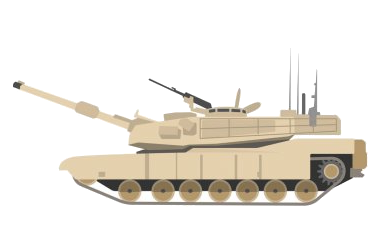

 Military, defense and equipment
Military, defense and equipment


 Aerospace
Aerospace
 Astronomy
Astronomy
 Review
Review
 Historical coins, banknotes
Historical coins, banknotes
